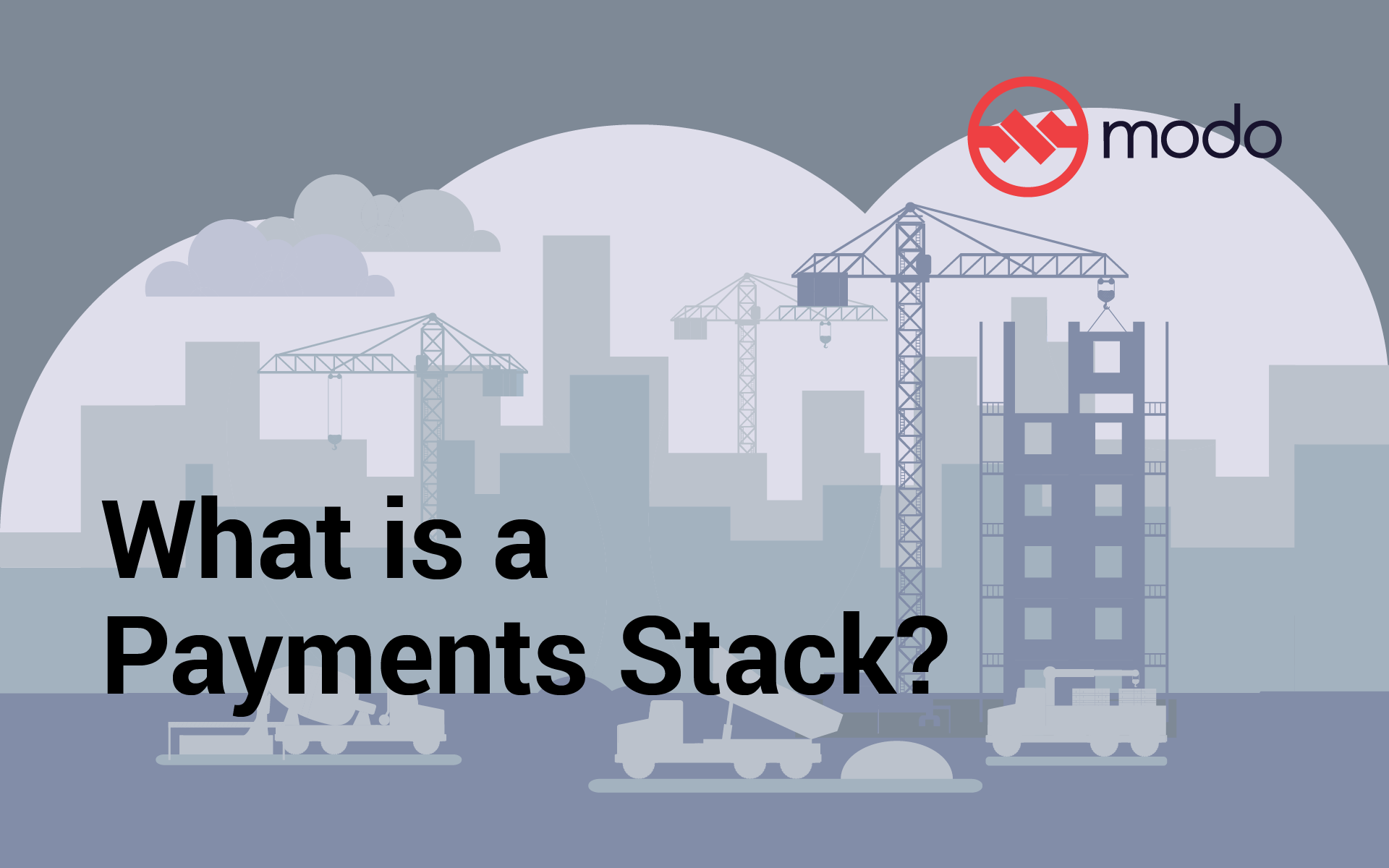Modo CEO, Bruce Parker, delves into the Payments Stack. Watch the video above to learn about payments stack, what the key components are, and what technology is right for you.
What is a payments stack?
A payments stack is a really simple concept - it's just all of the different set of software and services that you need in order to be able to run payments inside your company. That's it. 'Stack’ is kind of a cool kid word so we like using the word ‘stack’. That includes things like the ability to take in payments requests - like where do they come from? Does it come from a channel that's in store? Does it come from a channel that's online or digital? And then figuring out what kind of payment it is - is it a card? Is it a wallet? Is it a bank transaction? Is it something else? Does it include proprietary forms of payment like loyalty? Like offers? Like gifts? Maybe other things like credit? And then finally, sending those transactions out to the payment service providers or the payments systems of record within your own organization that are required to actually determine whether or not this is a good payment and then ultimately result in settlement.
What are some popular components of a payments stack?
So a payments stack is basically everything that you might need during that full lifecycle. It includes things like fraud. It includes things like what happens at the end of the day - how do you perform reconciliation? It includes reversals, refunds, chargebacks, and disputes. Of course, we don't like those, but those happen regularly.
Most people define a payments stack as having some form of an interface like an API. And APIs can mean a whole bunch of different things, but we'll just leave it there. A modern API of whatever format that then is managed by a set of things that are determining what kind of payment this is, how that should be treated within the organization, doing a series of steps, perhaps related to a fraud check, perhaps related to limits or order information or otherwise improving or changing the experience that might be associated with this purchase. And then ultimately connections out to the rest of the world where payments are processed, or in other words, payments service providers. Those are, in rough order, all the major elements.
How do you build your payments stack?
How people build payments stack really depends a great deal. Younger organizations, even if they have grown to be very large, have tended to build their own. There haven't tended to be products that they find appealing largely because of technology issues, and whether or not it was a modern set of architectures or something much older (we'll say "proven"). Larger enterprises that have been around for a while have, in many cases, bought vended products from large providers. Those tend to run on mainframes or those tend to run on Tandems. And those products generally have very specific functional scope. So there's a little bit of a mix-and-match between is it a younger company where they probably wrote everything themselves, or is it an older company where they probably bought something and maybe built their operations around that? Maybe the third option is a lot of people just don't have a payments stack. They've outsourced all of that to a provider whether that's a processor, like a First Data, or whether that's a payment services provider who does a lot of different things, like an Adyen.
What are some problems companies face when trying to build their payments stack?
Problems when building a payments stack include, well it's hard. Payments is complicated. It's a specialized set of capabilities. It's a specialized set of technologies in some cases particularly in the legacy sense. And it's definitely a set of things that can go wrong in horrible ways. So people have in some cases embraced that challenge and they think that that's really cool and fun because they're also #paymentsgeeks; other times that's kind of scared folks away from messing around and building their own stack or building their own infrastructure. So it really comes down to risk-taking. It really comes down to how strategic payments are to the organization which is changing. I think there are organizations who consider payments to be strategic. Uber has of course always held up as a good example of that that have kind of shown the way for a lot of other people. So some people are getting, kind of, brought into the pool, they're deciding "I'm going to take the risk, I'm going to take the leap, I want to be able to do more of this on my own.” But now they're really caught up with this decision, "Should I do this myself, should I partner with somebody, or should I look for something that's available out in the marketplace?"
Watch other related videos
